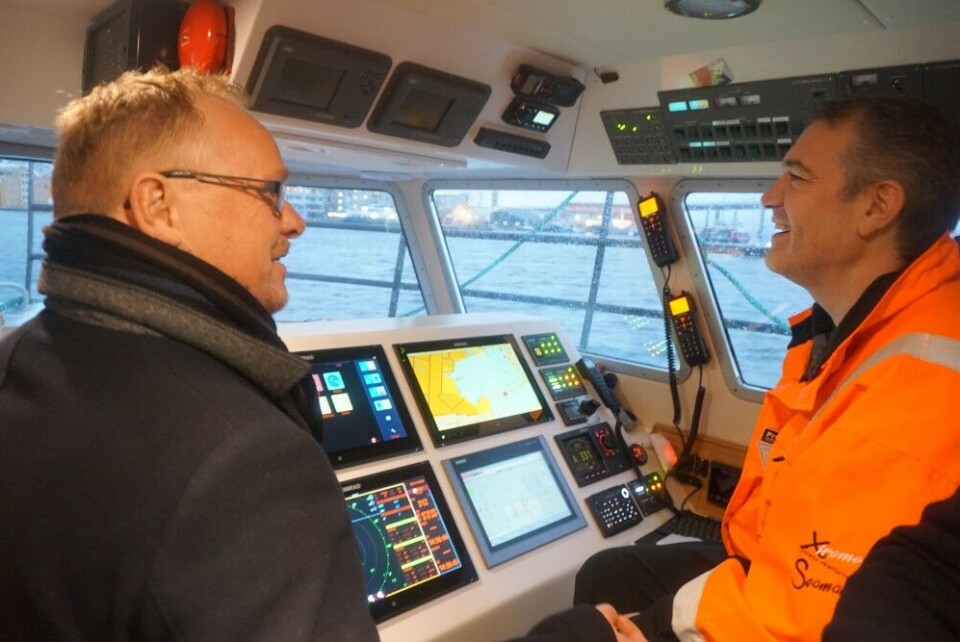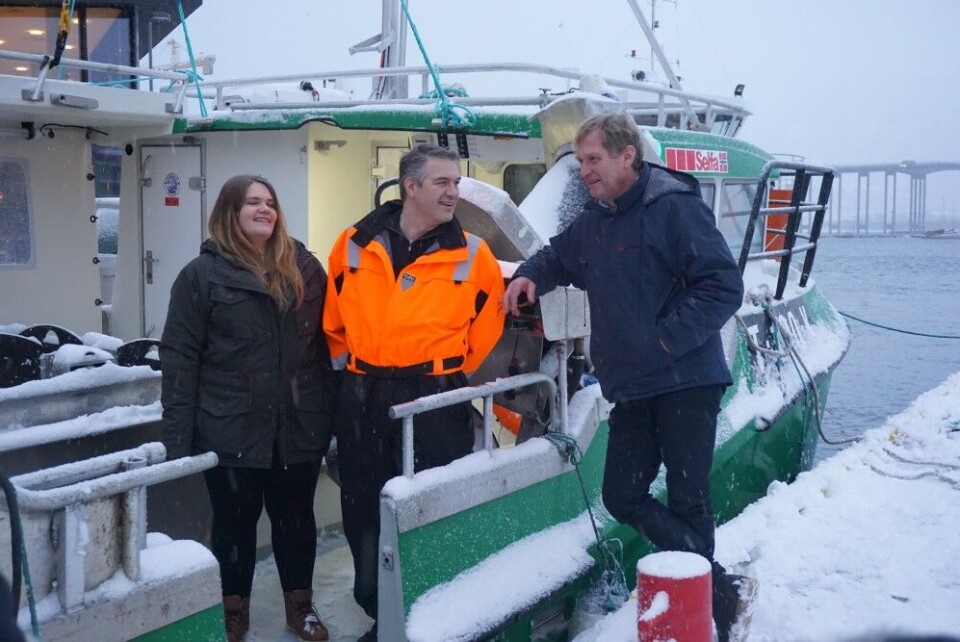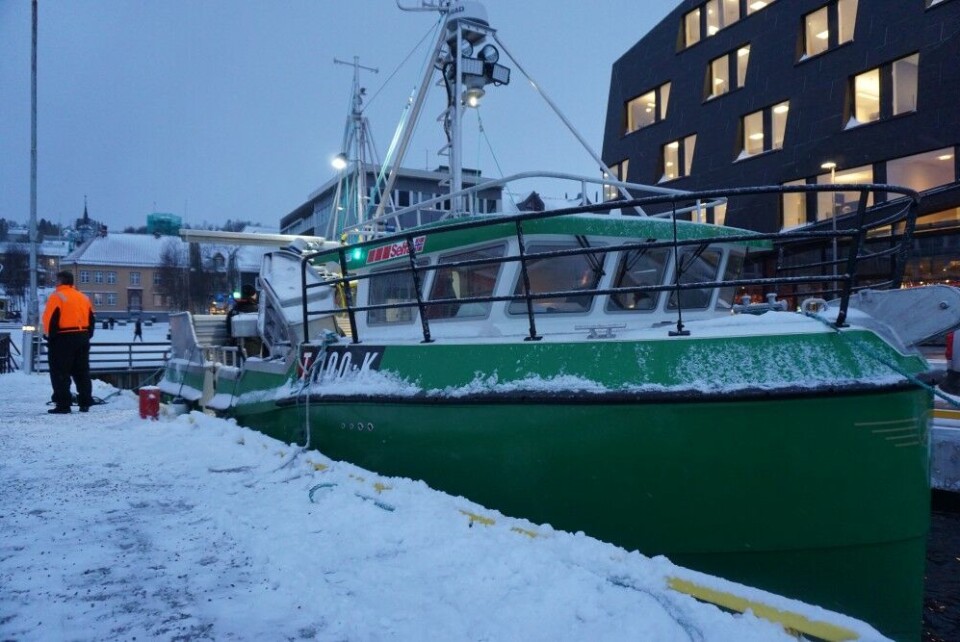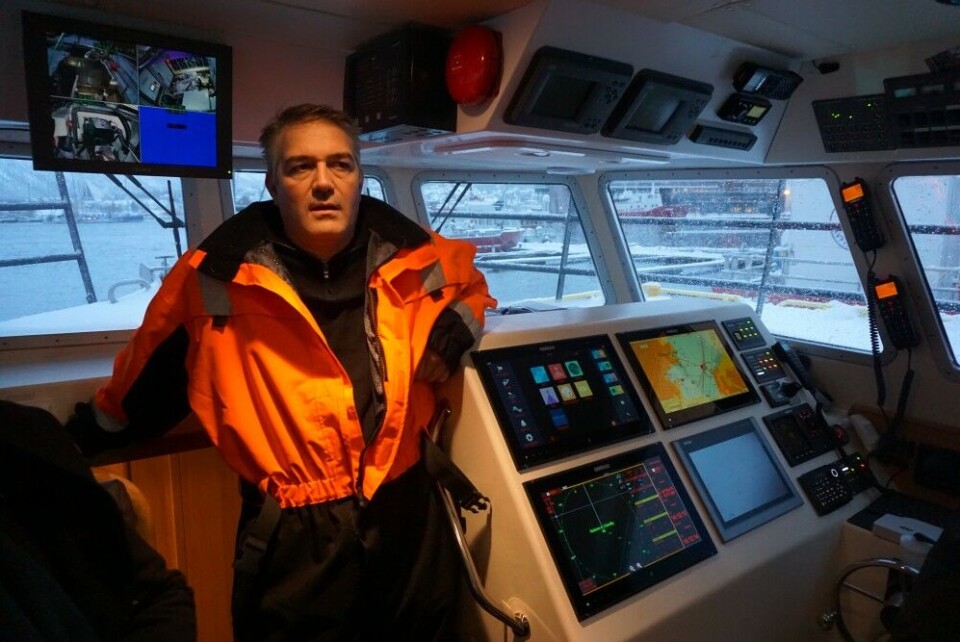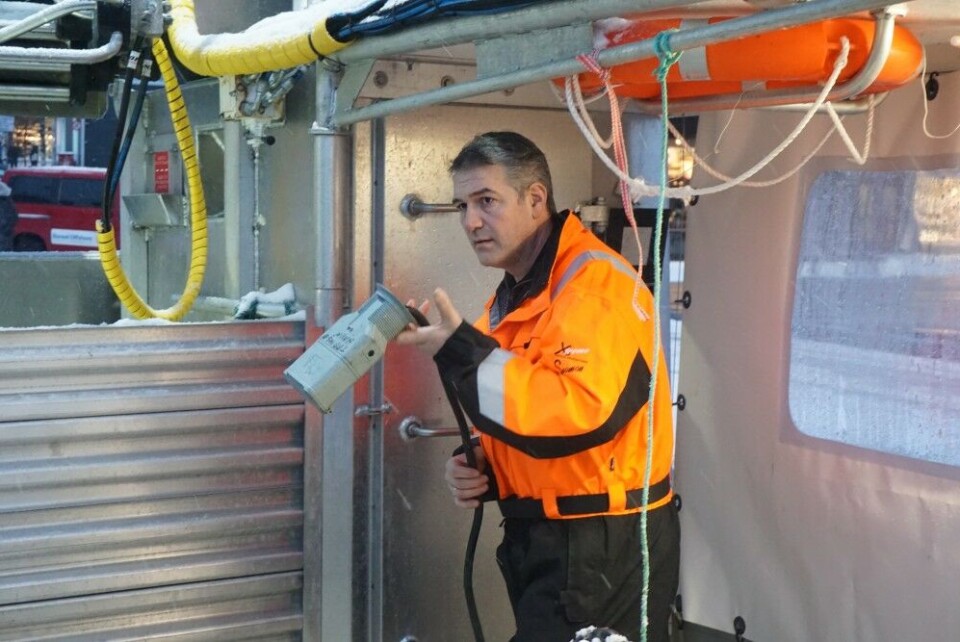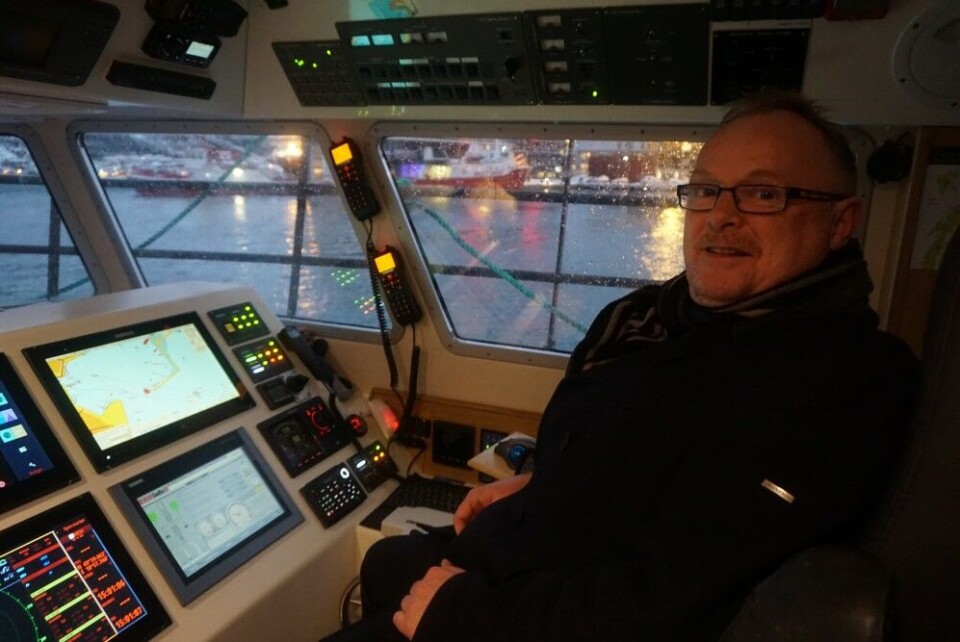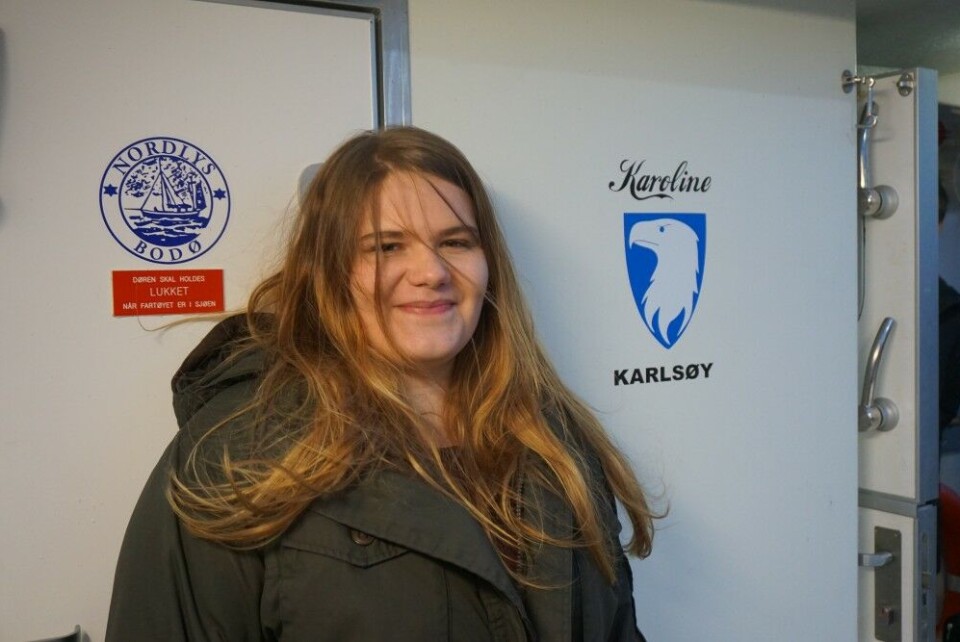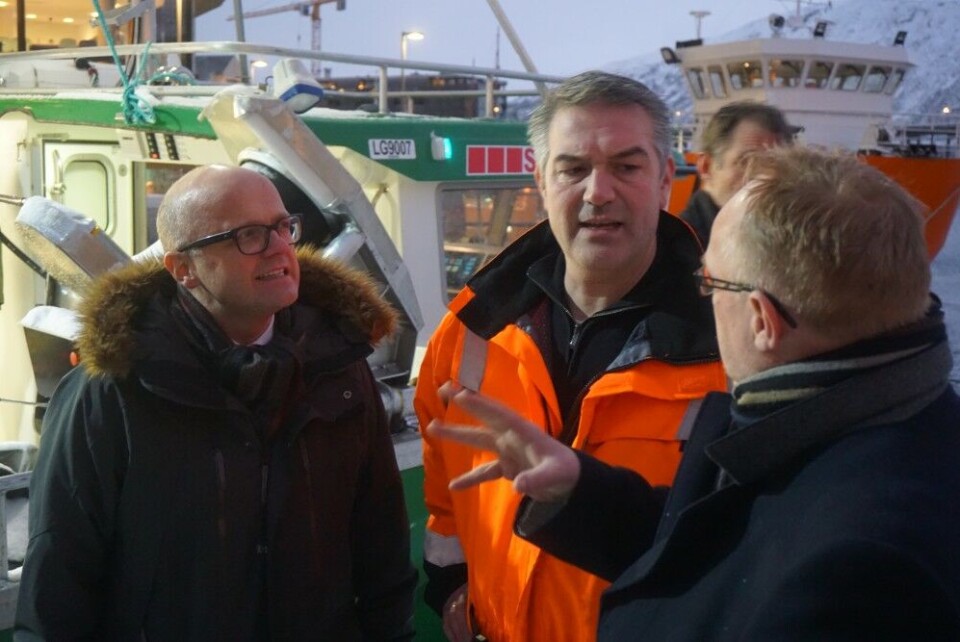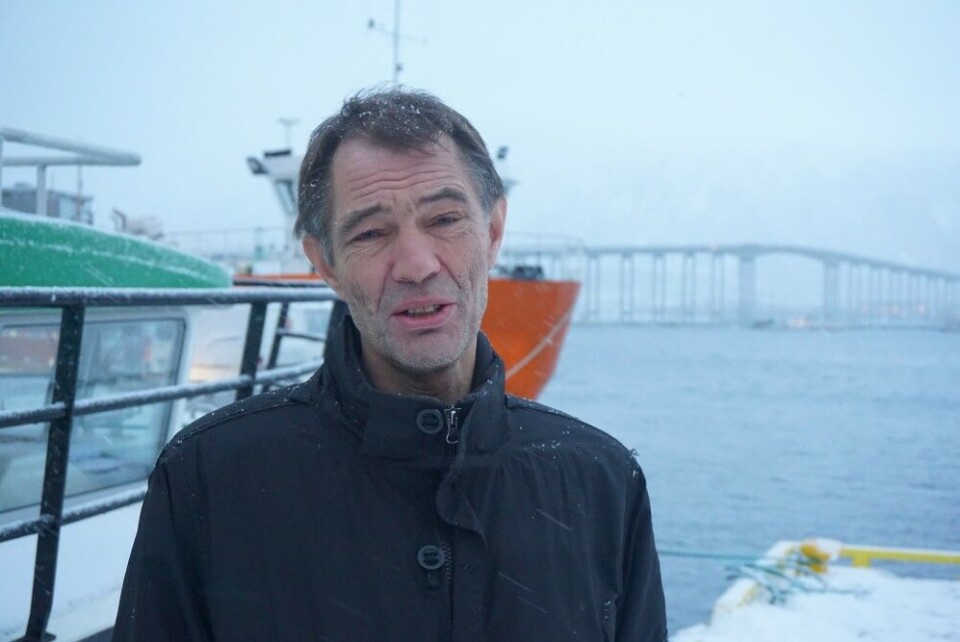“Karoline” sails even greener than her color
Can this be the Tesla of the Seas? Minister of Fisheries Per Sandberg is watching with great interest when Bent Gabrielsen sails the world’s first electric fishing boat in the waters outside northern Norway.
A blue-green revolution sails up in Norway. The fleet of electric vehicles, with Tesla in the front, is the largest per capita in the world. Now, battery technology enters Norway’s fishery sector.
Bent Gabrielsen from Karlsøy in Troms is proudly welcoming on board. “Karoline” – Gabrielsen’s third sjark named after his daughter, has made port-call to Tromsø as Minister of Fisheries Per Sandberg is in the town.
Less than €10 to charge the batteries
“It costs me 75 kroner to fully charge the batteries,” says Bent Gabrielsen. The charging is done overnight by plugging to the electrical grid in the harbor at home. The 30 lithium polymer battery modules are stored below deck in the rear of the vessel.
Gabrielsen uses the diesel engine onboard when sailing out to the fishing ground, but runs primarily on battery power while fishing and streaming. The diesel engine is also a backup to the batteries if required.
Sails well in stormy weather
The 11 meters fishing boat, a sjark with a crew of two, normally fishes at Eggakanten outside Vannøya in Troms. The waters of the coast of northern Norway can be stormy, but Bent Gabrielsen is used to harsh climate when setting the nets at sea.
With Minister Sandberg well onboard, “Karoline” sails out to sea with much less noise and vibrations than any traditional fishing boats.
“I am on board a learning expedition,” Per Sandberg says.
For Bent Gabrielsen it is important not only to show that the boat works as normal fishing vessels and have the same set of safety requirements. “There is a need of a carrot of some kind to provide incentives for fishermen to invest in electric boats,” he tells to Minister Sandberg.
Higher investment costs
Although “Karoline” saves some 30 to 40 percent of the fuel costs because the vessel runs on batteries for part of the voyage when out fishing; the investment costs are still much higher than a normal fishing boat.
“An extra 50 percent higher fish quota for electric powered fishing vessels would be a good incentive,” argues Gabrielsen. For him, higher quota would be better than direct subsidies.
“I hear what you say. And I am glad you don’t argue for subsidies, but instead want better conditions. That is music in my ears,” says Per Sandberg who represents the Progress Party in the Government.
Sandberg can, however, not promise higher quotas. “If you should get higher quotas, others will get less. That’s how it works,” Minister Sandberg says.
Selfa Arctic
It is Norwegian boat builder Selfa Arctic in Trondheim that has built “Karoline”. CEO Erik Ianssen says the vessel proves that it is possible to reduce CO2 emissions for the fleet of fishing vessels.
“What we need is good framework conditions for the fishermen so they can invest in electric vessels,” says Erik Ianssen. He points to Norway’s success with electric cars where the Government’s incentives are a success.
A main reason why one third of all electric cars in Europe are sold in Norway is because such cars are exempt from all non-recurring vehicle fees, including purchase taxes and the country’s 25 percent VAT.
Parliament member suggests tax reduction
Frank Bakke Jensen, Member of the Norwegian Parliament, supports the idea of adopting some special incentives in order to boost a kick-off in sales of electric fishing boats.
“Yes, maybe we can do it the Tesla-way, with for example tax exemptions or other good incentives,” Bakke Jensen says to the Independent Barents Observer. Coming from Båtsfjord in Finnmark, Frank Bakke Jensen has first-hand knowledge on the economical situation young fishermen face when investing into new vessels.
Electrification of the coastal maritime sector
Sigurd Enge with the environmental group Bellona hopes to see many more electric fishing boats along the coast of northern Norway in the years to come.
“This is just the beginning of a blue-green environmental revolution at sea,” Sigurd Enge says enthusiastic and continues:
“Norway shows they way for electrification of transportation. First it was cars, now it is the maritime sector where fishing boats and vessels used in aquaculture very well can run on batteries,” he says. Sigurd Enge has been a Captain at sea for decades, including in Norway’s Arctic waters around Svalbard.
“When people see that a electric sjark like “Karoline” works up here in the northern waters, their skeptisism soon disappear,” Sigurd Enge tells.

